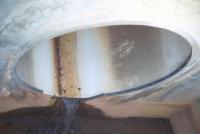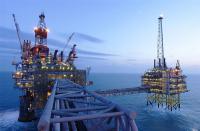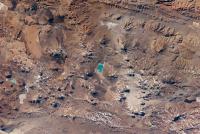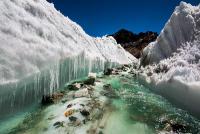-
DOE grant to make Sacramento, Calif. grid more resilient in emergencies

The Department of Energy (DOE) has awarded the Sacramento Municipal Utility District (SMUD) $600,000 to install smart-grid technologies which will make the SMUD grid more adaptable to adversity. The Grid Resilience Grant helps fund half of SMUD’s $1.2 million Resilient Grid Initiative which is designed to make SMUD’s distribution system more adaptable to major disasters and reduce the effects of climate change through the installation and operation of high-voltage (69 kilovolt) switches and the implementation and operation of voltage optimization measures. These measures will increase the carrying capacity of the system during major natural disasters and other emergencies.
-
-
U.S. coastal flood risk on the rise ten years after Hurricane Katrina
A decade after Hurricane Katrina caused $41 billion in property and casualty insurance losses, the most expensive catastrophe ever experienced by the global insurance industry, rising sea levels are driving up expected economic and insurance losses from hurricane-driven storm surge in coastal cities across the United States. Rising sea levels contributing to increased risk of severe economic damage from flood following a hurricane – and Miami, New York, and Tampa now face greater risk than New Orleans.
-
-
World’s most at-risk coastal regions should adopt Louisiana’s post-Katrina protection plans
A decade after Hurricane Katrina hammered America’s Gulf Coast, measures are being taken there to protect against similar devastation from natural disasters — as well as against long-term, gradual impacts resulting from climate change. Other coastal regions across the world, however, remain vulnerable to damaging storms, and providing similar protection for the tens of millions of people living in those areas — around 38 percent of the global population, or 2.5 billion people, lives within 100 kilometers (62 miles) of the coast — will require international action. Experts say that the world’s most at-risk nations should implement coastal protection plans like those adopted by Louisiana.
-
-
Toxic chemical found in fish-eating in birds outside of a Georgia’s Superfund site
Researchers have found that a contaminated mixture called Aroclor 1268 has spread beyond a former chemical plant, now a Superfund site, near Brunswick, Georgia. Aroclor 1268 is composed of a suite of toxic chemical compounds known as polychlorinated biphenyls, or PCBs. The chemical was used to produce insulation materials at the Linden Chemical Plant at the Turtle Estuary near Brunswick until 1994.
-
-
Two major U.S. aquifers contaminated with high levels of natural uranium
Nearly two million people throughout the Great Plains and California live above aquifer sites contaminated with natural uranium which is mobilized by human-contributed nitrate. Data from roughly 275,000 groundwater samples in the High Plains and Central Valley aquifers show that many Americans live less than two-thirds of a mile from wells that often far exceed the uranium guideline set by the Environmental Protection Agency. A new study reports that 78 percent of the uranium-contaminated sites were linked to the presence of nitrate, a common groundwater contaminant that originates mainly from chemical fertilizers and animal waste.
-
-
New tools increase Palestinians’ capacity to face earthquakes
A massive earthquake would lead to the devastation of 70 percent of houses in the Palestinian territories, and the death of 16 000 people. As the Palestinian territories are located in the Rift Valley — right at the frontier between the Arabian and African plates which are moving farther apart — the likelihood of earthquakes is expected to keep increasing. Two projects aim to make the next generation of citizens and researchers better equipped to face this growing threat.
-
-
New technology solves city pipelines leakage problem without excavation

In Mexico City there are twenty-six thousand kilometers of water pipes and drainage, of which about 8,000 are useless, with risk of collapse and resulting cuts in service. The water pipes infrastructure of many other cities is not much better. A Mexican start-up has created a technology to renew piping without the need for excavation, ensuring it lasts fifty years, twice as long as traditional piping.
-
-
Studying the impact of removing brine from under- sea carbon dioxide stores

The Birmingham, U.K.-based Energy Technologies Institute (ETI) is seeking partners for a project to study the impact of removing brine from under-sea stores that could be used to store captured carbon. A previous ETI project in its Carbon Capture and Storage (CCS) technology program led to the development of the U.K. principal storage screening database, CO2Stored, which made a number of assumptions to estimate capacity and injectivity for each of the 550 stores off the U.K. coast. One of these was that brine can potentially be removed through a purpose built well or wells from the store to depressurize it, and can still retain the operation and integrity of the store.
-
-
Inspired by bats, sensor technology detects dangerous structural cracks

Researchers have developed an ultrasound sensor for detecting dangerous cracks in structures such as aircraft engines, oil, and gas pipelines, and nuclear plants. The device, known as a transducer, identifies structural defects with varying ultrasonic frequencies and overcomes the limits of other, similar devices, which are based on rigid structures and have narrow ranges. It is thought to be the first device of its kind in the world.
-
-
Geoengineering technique would not stop sea level rise

Researchers used computer model experiments to test how the Greenland Ice Sheet would react to albedo modification, also called solar radiation management geoengineering, a proposed technology to cool down the Earth’s temperature by reflecting some sunlight away from the planet. They found the ice sheet might contribute to sea-level rise for decades to centuries after albedo modification began. The researchers say that albedo modification should not be counted on as a short-term solution to stop rising global sea levels.
-
-
Up to 30 percent less precipitation in the Central Andes in future

Seasonal water shortages already occur in the Central Andes of Peru and Bolivia. By the end of the century, precipitation could fall by up to 30 percent according to an international team of researchers. Researchers show that precipitation in the rainy season could drop noticeably - and this could happen within the next twenty years.
-
-
Worries grow about rain-induced toxic chemical clouds from destroyed Chinese facility
China’s state-run news agency has reported that the warehouse where last Wednesday’s powerful explosions in the Chinese city of Tianjin originated, received a license to handle hazardous chemicals only two months before the disaster. The official count now stands at 114 dead, 700 injured, and 53 missing. Most of the dead, injured, and missing are firefighters. Officials said that more than forty different types of chemicals have now been discovered at the blast site, including 700 tons of sodium cyanide, 800 tons of ammonium nitrate, and 500 tons of potassium nitrate. Chemical engineers said that the heavy rains which began to fall on the city Monday night set off more chemical reactions, creating clouds of toxic gas which would waft over residential areas – some of them less than a mile from the destroyed chemical facility – and hobble rescue and recovery work.
-
-
Warming-driven substantial glacier ice loss in Central Asia imperils water supplies

Central Asia is the outstanding case for human dependence on water seasonally delayed by glaciers. Nowhere the question about the glacier state is linked so closely to questions of water availability and, thus, food security. The glaciers in Central Asia, however, experience substantial losses in glacier mass and area. Along the Tien Shan, Central Asia’s largest mountain range, glaciers have lost 27 percent of their mass and 18 percent of their area during the last fifty years. Scientists estimate that almost 3,000 square kilometers of glaciers and an average of 5.4 gigatons of ice per year have been lost since the 1960s, saying that about half of Tien Shan’s glacier volume could be depleted by the 2050s.
-
-
Sodium cyanide stored at explosion site pollutes city’s water
The Chinese government says that 114 people, most of them firefighters, have been killed and ninety-five still missing after first responders were sent to the Tianjin chemical plant to fight large fires which broke out after a powerful explosion at the plant last Wednesday. Chinese officials say they found 700 tons of sodium cyanide at two locations at the site. Chinese public health officials said on Monday that the health risks of last week’s explosion are spreading, reporting that alarming levels of sodium cyanide have been found at wastewater monitoring stations in and around the city of Tianjin.
-
-
Toxic blue-green algae a growing threat to nation’s drinking, recreational water
A new report concludes that blooms of toxic cyanobacteria, or blue-green algae, are a poorly monitored and underappreciated risk to recreational and drinking water quality in the United States, and may increasingly pose a global health threat. Several factors are contributing to the concern. Temperatures and carbon dioxide levels have risen, many rivers have been dammed worldwide, and wastewater nutrients or agricultural fertilizers in various situations can cause problems in rivers, lakes, and reservoirs.
-
More headlines
The long view
Helping Strengthen America’s Critical Infrastructure
By Corinne Dionisio
Everyday life depends on a robust infrastructure network that provides access to running water, communications technology and electricity, among other basic necessities. The experts who keep our national infrastructure secure and resilient also need a strong network to share their knowledge and train the next generation of professionals capable of solving complex infrastructure challenges.
AI and the Future of the U.S. Electric Grid
By Doug Irving
Despite its age, the U.S. electric grid remains one of the great workhorses of modern life. Whether it can maintain that performance over the next few years may determine how well the U.S. competes in an AI-driven world.
Using Liquid Air for Grid-Scale Energy Storage
By Nancy W. Stauffer
New research finds liquid air energy storage could be the lowest-cost option for ensuring a continuous power supply on a future grid dominated by carbon-free but intermittent sources of electricity.
Enhanced Geothermal Systems: A Promising Source of Round-the-Clock Energy
By Julie Bobyock and Christina Procopiou
With its capacity to provide 24/7 power, many are warming up to the prospect of geothermal energy. Scientists are currently working to advance human-made reservoirs in Earth’s deep subsurface to stimulate the activity that exists within natural geothermal systems.
Experts Discuss Geothermal Potential
By Graeme Beardsmore and Rachel Webster, University of Melbourne
Geothermal energy harnesses the heat from within Earth—the term comes from the Greek words geo (earth) and therme (heat). It is an energy source that has the potential to power all our energy needs for billions of years.
